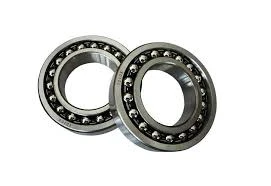
9 月 . 22, 2024 14:59 Back to list
angular contact bearings
Understanding Angular Contact Bearings An Essential Component in Machinery
Angular contact bearings are a crucial component in various mechanical systems, playing a vital role in enabling smooth rotational movements while supporting axial and radial loads. These specialized bearings are designed to accommodate combined loads, making them ideal for applications where both radial and axial forces are present. In this article, we will delve into the construction, functioning, advantages, and applications of angular contact bearings.
Construction and Design
Angular contact bearings consist of an inner race, an outer race, and rolling elements, usually balls or rollers. The key feature of these bearings is the angle of contact between the rolling elements and the races. This angle typically ranges from 15 to 40 degrees, allowing the bearing to handle axial loads effectively. The design of angular contact bearings allows them to pivot slightly, providing stability and reducing the risk of misalignment. They are often found in pairs or sets to enhance load-carrying capacity and maintain precise alignment.
How Angular Contact Bearings Work
When a radial load is applied to an angular contact bearing, the load is transmitted through the rolling elements and interacts with the raceways at an angle. This geometry enables the bearing to support significant axial loads in one direction. For applications where loads are multidirectional, bearings are commonly arranged in pairs, facing opposite directions (back-to-back or face-to-face configurations). This arrangement allows them to manage both radial and axial loads with high efficiency, ensuring the stability and longevity of the machinery.
Advantages of Angular Contact Bearings
angular contact bearings

One of the primary advantages of angular contact bearings is their ability to handle combined loads effectively, making them suitable for high-speed applications. Their design reduces friction, which results in lower operating temperatures and improved energy efficiency. Additionally, they have a higher load-carrying capacity compared to standard radial bearings, making them ideal for demanding applications. The ability to accommodate axial loads also allows for more compact designs in machinery, as fewer bearings may be needed to fulfill the same functional requirements.
Applications
Angular contact bearings find applications across various industries, highlighting their versatility and performance. They are commonly used in
1. Automotive Applications In electric motors, gearboxes, and wheel hubs, these bearings support both radial and axial loads while enabling smooth operation. 2. Aerospace Precision and reliability are crucial, making angular contact bearings ideal for engine components and landing gear systems. 3. Industrial Machinery Manufacturing equipment, conveyor systems, and pumps often rely on angular contact bearings for long-lasting performance under high loads. 4. Robotics In robotic arms and automated systems, these bearings ensure accurate movements and stability, enhancing overall performance.
Conclusion
In conclusion, angular contact bearings are indispensable in modern machinery, providing critical support for combined loads in various applications. Their unique design, ability to handle axial loads, and increased efficiency make them a preferred choice in industries where reliability and precision are paramount. As technology advances and machinery becomes increasingly complex, the importance of angular contact bearings will continue to be recognized, ensuring that they remain a fundamental component in the engineering landscape.
Latest news
-
Unlocking Efficiency with Spherical Roller Bearings
NewsOct.29,2024
-
The Ultimate Guide to Thrust Ball Bearings
NewsOct.29,2024
-
The Power of Thrust Roller Bearings: Engineered for Excellence
NewsOct.29,2024
-
The Power of Deep Groove Ball Bearings for Your Application Needs!
NewsOct.29,2024
-
The Power and Performance of Cylindrical Roller Bearings
NewsOct.29,2024
-
High-Quality Ball Bearing Manufacturing Machines
NewsOct.29,2024
